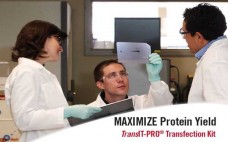Since the concept of “well-characterized biologics” entered the biopharmaceutical industry’s vernacular late in the 20th century, increasing emphasis has been placed upon product and process characterization. Analytical laboratories have always been vital to bioprocessing, whether they were performing in-house quality assessments, preformulation and other types of product characterization, and process scale-up and optimization support, or outsourced viral safety and product testing. Recent advances in analytical technologies such as high-performance liquid chromatography (HPLC) and mass spectrometry (MS), as well as other…
Sunday, September 1, 2013 Daily Archives
NIR Spectroscopy for Process Monitoring and Control in Mammalian Cell Cultivation
The quality by design (QbD) and process analytical technology (PAT) approaches have shown significant benefit in the classical pharmaceutical industry and are now strongly influencing bioprocessing. Monitoring critical process parameters (CPPs) during biotechnological cell cultivations is essential to maintaining high efficiencies and quality. Commercial sensor systems for real-time inline monitoring are available for some parameters, such as pH or the concentration of dissolved oxygen (DO). For others such as glucose concentration, total cell count (TCC), and viability no robust online…
Manufacturing
We editors think of the “manufacturing” theme as a sort of catch-all category for technical issues that aren’t specifically protein-production or separation/purification related. For us, that has always included assay development and other analytical topics that are more product- than process-focused. For the purposes of this conference-guide supplement, however, we have developed a separate article for analytical matters. So what falls under manufacturing? In past BPI Conferences, tracks such as “Production and Economics” and “Scaling Up from Bench to Clinic”…
Protein A
The number of blockbuster monoclonal antibody (MAb) drugs continues to grow. In 2008, MAbs generated revenues in excess of US$15 billion (1), making them the highest-earning category of all biotherapeutics. The world MAb market will reach $62.3 billion in 2015, with next-generation therapeutic antibody revenues reaching $2.3 billion in 2015 according to Visiongain reports published in September and November 2011 (2, 3). Biosimilar antibodies will also begin to enter established markets as regulatory authorities clear approval pathways for them. Most…
Downstream Processing
The “Recovery and Purification” track began many years ago as a conference of its own. In October 2004, IBC Life Sciences brought it together in Boston, MA, with three other events (“Cell Culture and Upstream Processing,” “Production and Economics,” and “Scaling Up from Bench to Clinic”) to create the program of the first BPI Conference and Exhibition. Just like BPI magazine’s editors, the event producers have depended on industry advisors since the beginning. Our editorial advisory board (EAB) members give…
Enlightening Results
Separating spectroscopy from spectrometry is not as straightforward as it might seem. Spectroscopy is the science of the interactions between matter and radiated energy, and spectrometry is the technology that applies that science (1). The former generates no results on its own. It is concerned with spectra produced when matter interacts with or emits electromagnetic radiation, including all methods of producing and analyzing light spectra using spectroscopes, spectrographs, spectrometers, and spectrophotometers. The distinction should come from the meanings of the…
Upstream Processing
The “Cell Culture and Upstream Processing” track began many years ago as a conference of its own. In October 2004, IBC Life Sciences brought it together in Boston, MA, with three other events (“Recovery and Purification,” “Production and Economics,” and “Scaling Up from Bench to Clinic”) to create the first BPI Conference. Just like BPI magazine’s editors, the event producers have depended on industry advisors from the beginning. Our editorial advisory board (EAB) members give generously of their time and…
Standards for Ancillary Materials Used in Cell- and Tissue-Based Therapies
Cell- and tissue-based therapies are being used increasingly to treat many diseases for which currently no other adequate treatment options are available. These products contain human or animal cells that can replace, regenerate, or augment a recipient’s diseased, dysfunctional, or injured cells, tissues, or organs. Cells or tissues might be unmanipulated, or their biological characteristics can be altered ex vivo before administration of the final product to patients. Examples of cell therapies range from traditional blood transfusions to recent approaches…
Mirus TransIT-PRO® Transfection Kit for Biotherapeutic Protein Production
Decrease time to produce usable protein by maximizing target protein yields through transient transfection. The TransIT-PRO® Transfection Kit uses animal origin free components designed for high and reproducible nucleic acid delivery into suspension CHO and 293 derived cells. Since it is compatible with varied media formulations, the same media can be used for both transient and stable expression. The TransIT-PRO outperforms linear PEI in protein yield, while providing a cost-effective alternative to FreeStyle™ MAX and 293Fectin™ Transfection Reagents.

